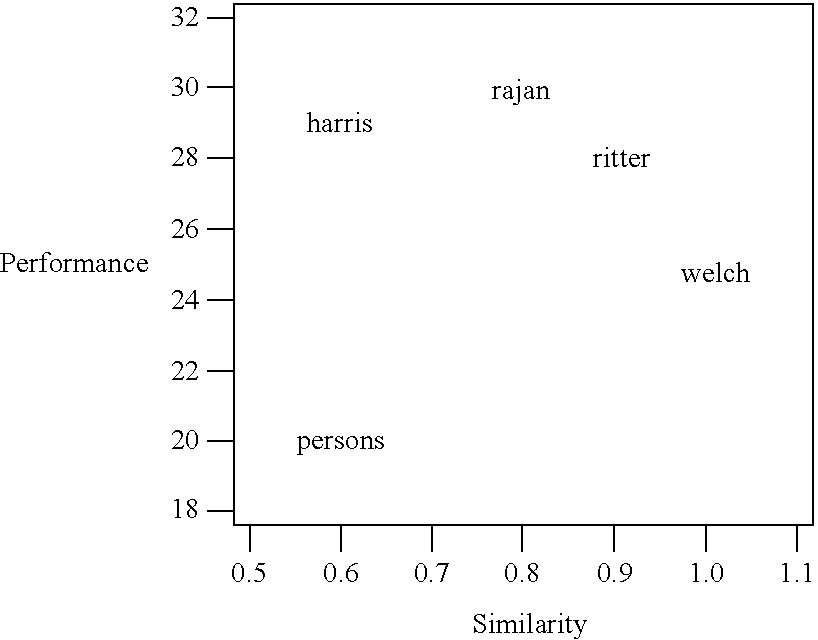Automated peer performance measurement system for academic citation databases
a technology of peer performance measurement and academic citation databases, applied in the field of information science and searchable databases, can solve the problem that both of these choices are typically very subjectiv
- Summary
- Abstract
- Description
- Claims
- Application Information
AI Technical Summary
Benefits of technology
Problems solved by technology
Method used
Image
Examples
Embodiment Construction
[0027]Turning not to the specifics of the system of the present invention, as was stated above, the system of the present invention is implemented as follows:
[0028]1. An end user types a search query into an interface, typically a form on the World Wide Web. The search can be free-form text, categorized text, or a choice from a list.
[0029]2. The query is transmitted to the system.
[0030]3. The system searches for the appropriate data record. This record can be an aggregation (e.g., the researcher; from the data base perspective, a researcher is mostly a set of published articles and biographic information).
[0031]4. The system then looks up all similar aggregations (“peers”), in this example a researcher. The similarity metric itself can be computed for each researcher prior to end user use (e.g., stored in a data base or cache), or computed on the fly.
[0032]5. The system searches for data records from the peers. Methods to accomplish this are familiar.
[0033]6. The system returns the ...
PUM
 Login to View More
Login to View More Abstract
Description
Claims
Application Information
 Login to View More
Login to View More - R&D
- Intellectual Property
- Life Sciences
- Materials
- Tech Scout
- Unparalleled Data Quality
- Higher Quality Content
- 60% Fewer Hallucinations
Browse by: Latest US Patents, China's latest patents, Technical Efficacy Thesaurus, Application Domain, Technology Topic, Popular Technical Reports.
© 2025 PatSnap. All rights reserved.Legal|Privacy policy|Modern Slavery Act Transparency Statement|Sitemap|About US| Contact US: help@patsnap.com



